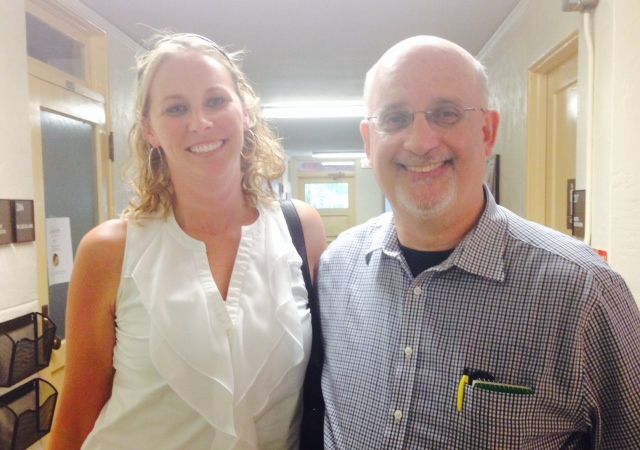



WORDS TO
THE WISE
Top 10 Slang Words We Won’t See in 2115
09.16.15
Every so often, NPR correspondent Linton Weeks does one of his “back in the day” etymological segments, offering a witty look at how America’s collective dialect has evolved over the past several generations.
His most recent effort, 16 ‘Spiffy’ Words College Students Used In 1916, got me thinking: What slang words do kids use today that will be long forgotten a century from now?
With the help of my (younger, hipper) coworkers here at Costa Communications Group – most of whom got really “turned up” for this assignment – here’s our Top 10, in no particular order … with helpful workplace examples for the more seasoned readers among us:
Rob Humphreys, tubular senior writer and editor, grew up in an era when bad was good.
Thrift and the Art of Writing
01.28.15
When I want to wax nostalgic, nothing fits the bill quite like watching “A River Runs Through It.” This story of life in turn-of-the-century Montana continues to hold a mystical appeal, its tragic melancholy resonating with age.
As a writer and editor, I’m drawn to an early scene where the fly-fishing narrator speaks of his childhood education.
“Each weekday while my father worked on his Sunday sermon, I attended the school of the Rev. Maclean. He taught nothing but reading and writing, and, being a Scot, believed that the art of writing lay in thrift.”
As you’ll see in the clip, the spectacled Presbyterian minister – red pencil in hand – does a number on his son’s assignment.
“Half as long,” he admonishes.
After a rewrite, the boy returns, waiting rigidly for approval – and the ensuing freedom to fish Missoula’s Blackfoot River.
“Again,” his father says. “Half as long.”
Eyes rolling and teeth clinched, the young man gives it one final try.
“Good,” the reverend tells his son. “Now throw it away.”
A peculiar directive. But as the years pass, I appreciate its wisdom all the more.
Rob Humphreys is a senior writer and editor at Costa Communications Group. Watching “A River Runs Through It” as a 17-year-old, he dreamed of moving out West to – as the Rev. Maclean puts it – explore “the natural side of God’s order.”
The Best Reward for a Writer? Finding Life’s Hidden Heroes.
09.03.14
By Rob Humphreys
A recent segment on NPR interviewed “Kinda Like Brothers” author Coe Booth, whose new book draws upon her former career as a caseworker with child protective services in New York City. It was often her job to pair abused and neglected children with families that offered a safe living environment.
This got me thinking about the good work being done by Community Based Care of Central Florida (CBCCFL), the region’s lead foster care and adoption agency.
As a writer, part of my job is to spotlight “everyday people” making a big difference in the lives of others. They’re not hard to find, especially when it comes to our area’s diverse array of foster parents.
Over the past few months, I’ve been blessed to help share the stories of two strong CBCCFL foster moms:
As someone who fostered a child, I know how difficult – yet fulfilling – this act of love can be. Beyond all the sacrifice and challenges, there is great joy in providing a vulnerable child the foundation to start a new life.
CBCCFL is always in need of foster parents like Lois and Mariana. They are the hidden heroes among us, and their dedication to children not only makes Central Florida a better place … it makes my job that much more rewarding.
Rob Humphreys is a writer and editor with Costa Communications Group.

True/False Quiz: Writing for New Media
10.01.13
I recently spoke at writing professor (and former Orlando Sentinel movie critic) Jay Boyar’s “writing for the future” class at Rollins College. Go ahead and test your writing for new media savviness with the following true/false quiz.
Always post original content.
False. Repurposing is the name of the game. As some public relations pros share here in Ragan’s PR Daily, “re-work, reuse, and repurpose past content in new ways to give it fresh life on social and digital media.” It’s best to work with the original content your company already has – and then give it a social media facelift. That’s not to say that you shouldn’t have some new content woven in, but remember to first retool original content to be used in engaging ways for social media. This can be in the form of blogs, guest posts, podcasts, videos, webinars, etc.
Keep search engine optimization (SEO) top of mind in everything you write for new media.
False. I anticipate this answer to be debated. My opinion is that you should keep SEO in mind when you write, but it shouldn’t dictate style. After all, if the content isn’t good, SEO really won’t matter. This answer also depends on how important SEO ranking is to a particular business. Use your judgment, but know that if you don’t keep content king, there’s no room to court SEO.

Jay Boyar’s Guide to “Five-Star” Writing
06.05.12
Last week, I had the pleasure of meeting Jay Boyar, a writer for Orlando Home & Leisure and an adjunct film professor at the University of Central Florida and Rollins College.
I was excited to meet Jay because for more than 20 years he was the movie critic at the Orlando Sentinel. An avid moviegoer, I wanted to get his take on some of his favorite movies and was eager for him to explain to me exactly why he gave Batman (the one with Michael Keaton in 1989) five stars.
Jay is not only a nice guy, he’s a big believer in meeting the younger generation “halfway” with his teaching methods.
For example, he maintains a blog where he posts upcoming discussion topics for his students. He says they come much better prepared for dialogue after reading the blog as opposed to him just announcing the topics in class beforehand.
Jay is still “traditional old school” on some things, though — like the importance of grammar and clear writing. Below he shares some of his timeless writing tips. Enjoy!
Prof. Boyar’s Timeless Writing Tips
So it should be: The barista, who made the latte, used too much milk.
And it should be: It’s the magic hammer that allows Thor to fly.
(And it can also be: Thor has a magic hammer, which allows him to fly.)
It’s: Harry and Hermione walk into Hogwarts.
Not: Harry and Hermione walked into Hogwarts.
It’s: “I like ice cream,” she said.
Not: “I like ice cream”, she said.
Is anything important missing from this paper?
Is there anything in this paper that doesn’t really need to be there?
Doreen Overstreet enjoys writing and movies. She thinks Jay Boyar should start a local film club and would even be open to watching Batman again to re-evaluate her 1989 opinion.
The Ruling on the Language of Laws
04.02.12
Photo credit: gwilmore
If you’re baffled by the jargon from the 2,300-page Dodd-Frank financial law or the Medicaid and Medicare reforms, don’t worry … so are federal judges. A recent Wall Street Journal article discussed how legal authorities across the country are lashing out against poorly written, “tortuous” legal texts. From sentences that take two paragraphs to reach the first period … to the overuse of footnotes … to content that requires a thesaurus word hunt, the judges criticize the incoherency of these documents.
Some legal experts say that we live in a complex world and this is just par for the course. I agree, but there’s a difference between tackling difficult subject matter and abusing words to escape being understood.
Author William Zinsser of the book On Writing Well said that “clutter is the disease of American writing” and verbal camouflage is a national epidemic. Lawmakers and lobbyists should really read his stuff.
As public relations professionals, we strive for clarity in language to help clients benefit from clear messaging. But I don’t live in a bubble. I know that language is abused by many people (including some people in the PR industry).
One of my favorite quotes about language is by author and research fellow at MIT Sloan School’s Center for Digital Business Michael Schrage:
“Let’s never ever forget that language has evolved as much as a medium for ambiguity and misdirection as a vehicle for clarity and explicitness.”
I applaud these judges for standing up for our laws and our language. What’s your ruling?
Doreen Overstreet does not like to read the tax code and commends those who try.
The Power of Editing
03.26.12
“Um, you have something in your teeth.” If you’ve ever heard these words from a friend, you know the value of someone pointing out an embarrassing detail you overlooked.
The same is true of editing, a stage in the writing process that’s often ignored but always crucial — especially in today’s media environment, when we’re bombarded by thousands of messages every day. Losing your audience’s trust is as easy as making one mistake.
Even the most seasoned communicators realize the importance of editing. In response to a question about his work habits, advertising mastermind David Ogilvy wrote: “I am a lousy copywriter, but I am a good editor. So I go to work editing my own draft. After four or five editings, it looks good enough to show to the client.”
Reviewing your own writing with a critical eye is a good place to start. In a recent column for The Chronicle of Higher Education, writing professor Rachel Toor reveals a few tricks, such as typing in a different font, enlarging the text on her screen so mistakes jump out and proofing hard copies of her manuscripts. Reading your work aloud can help, too.
It’s also smart to have a colleague read your writing — not only to eliminate errors, but to help refine your message. Having a second set of eyes on your work can help you recognize when a point won’t register with your readers the way you want it to.
All of this can add up to a big difference when it comes to reaching your audience. IBM tested edited vs. unedited versions of web content, measuring how many clicks each version received. “The results were astonishing,” they concluded. “We got a 30 percent improvement on the desired call to action for the pages across the board.”
Now that’s the power of editing.
Having finished lunch a few minutes ago, staff writer Mary Tindall just checked for any errant sprigs of broccoli in her teeth.
Frankly, My Dear …
01.18.11
Do many of your e-mails begin with “Dear so-and-so”? A lot of times mine do – probably too frequently. But I’m torn between the most appropriate phrases. I fluctuate from “Hi”/“Hey” … to “Good morning” … to “Greetings” (group e-mail) … to no salutations at all (usually done only with people I’m familiar with).
I took a brief inventory of the last 50 e-mails I sent. The openings were as follows:
Similarly, I analyzed 50 most recent messages in my inbox. The breakdown was a little different:
Ironically, the only formal “dear” salutations I had in my inbox were from spammers. I probably don’t get as many formal acknowledgements as I send because more people are replying to my requests … or ignoring them. (I’m a PR person, after all.)
According to a recent Wall Street Journal article many modern communicators are nixing the salutation “dear” in their e-mails. Since e-mail is an informal medium, many assert that you have to craft the correspondence accordingly – and the right greeting sets the tone.
Figuring out the art of the best opening can be tricky. In the book SEND, authors David Shipley and Will Schwalbe discuss this topic, although they say that “Dear” is always acceptable and always correct.
So dear readers, what do you think?
Sincerely, (And, proper closings are probably a separate blog post all together …)
Doreen
